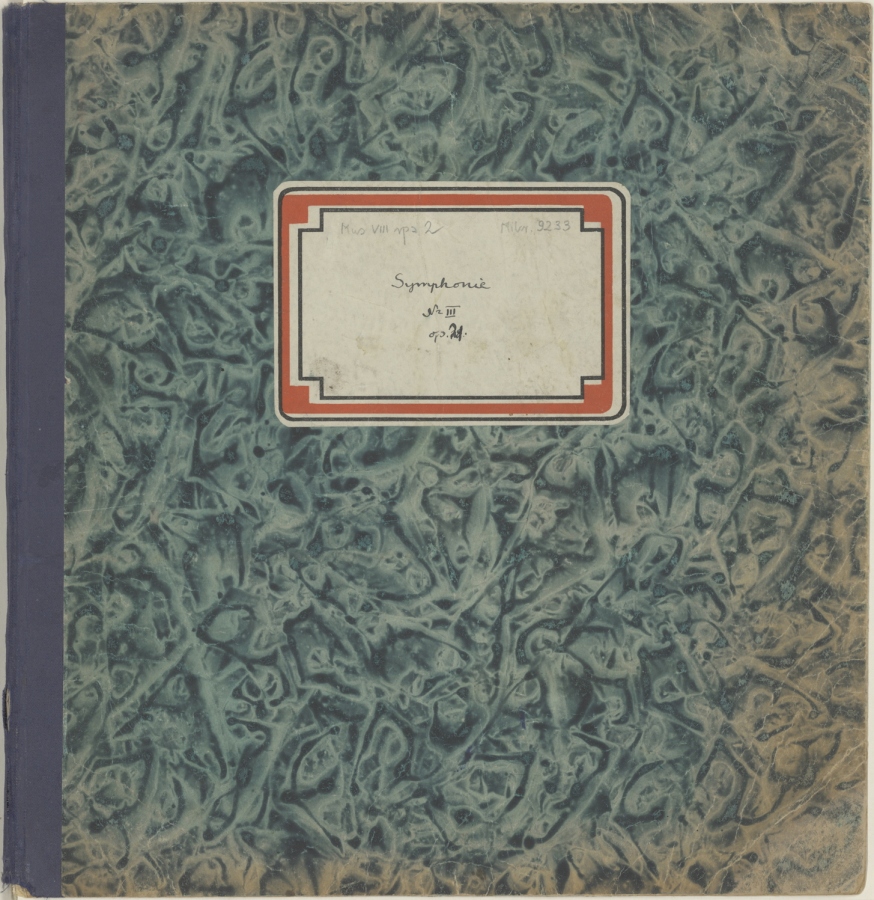
Symphony No. 3 for wind orchestra, Op. 21 (ca 1935)
Instrumentation: 3 flutes, 3 oboes, 3 clarinets, 3 bassoons, 4 horns, 3 trumpets, 3 trombones, tuba, timpani, glockenspiel, harp
Manuscript: University of Warsaw Library (BUW). Call number: Mus. VIII manuscript 3
Premiere: No data available
Movements: I. Adagio. L'istesso tempo; II. Allegretto moderato; III. Andante, semplice e sostenuto; IV. Molto vivace
Performers: Spring Orchestra of the Warsaw Autumn Festival, Victoria Zhadko – conductor Warsaw Autumn Festival 1996
It is scored for a twenty-six-piece wind ensemble and percussion (only pitched instruments).
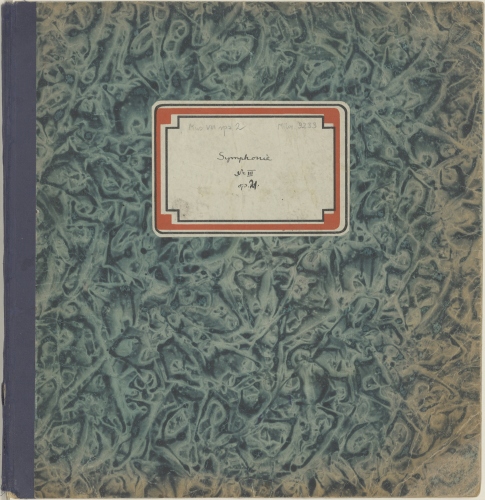

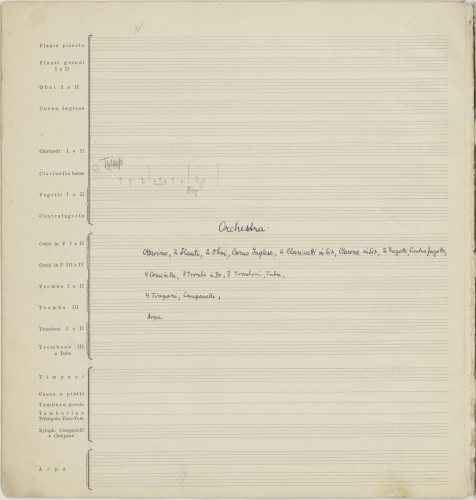
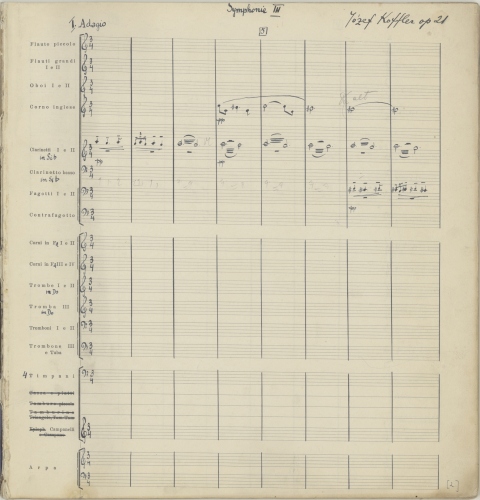
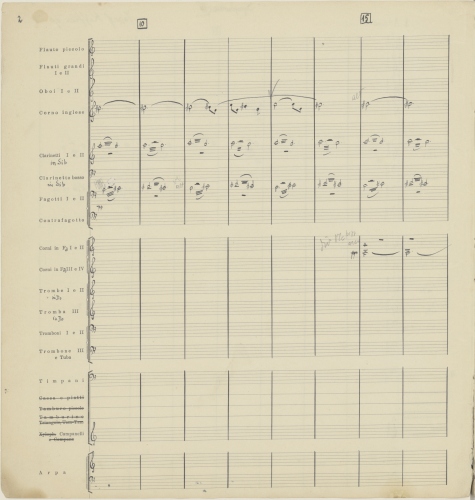
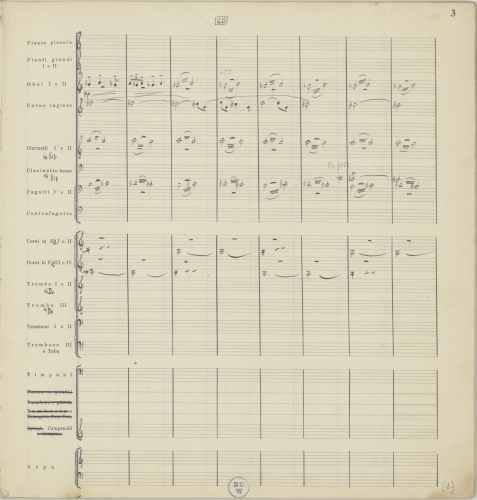
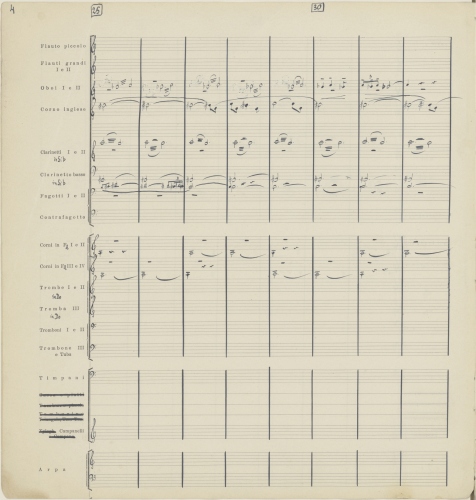
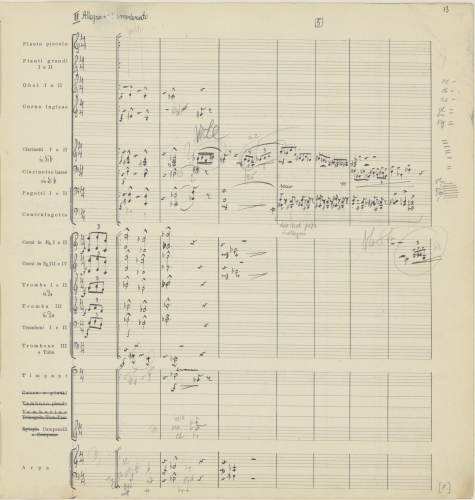
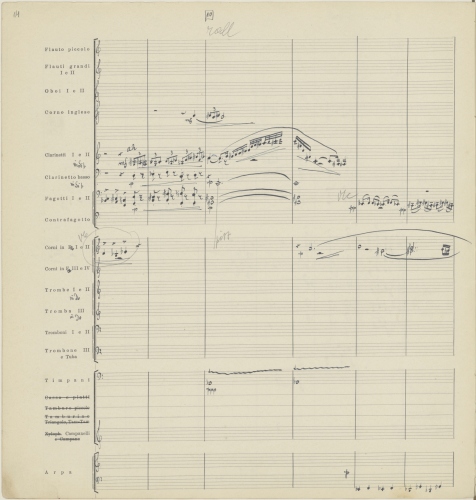
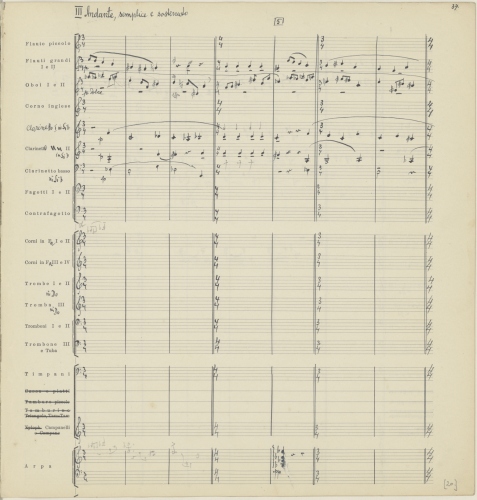
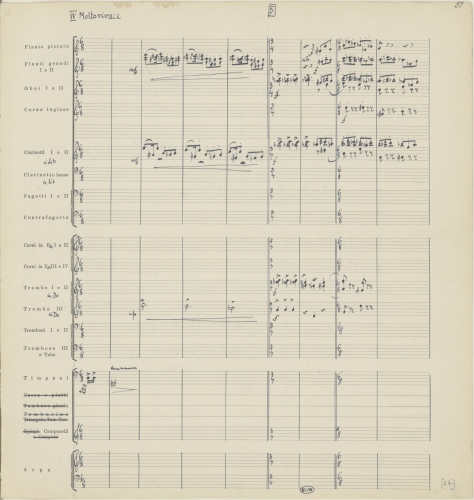
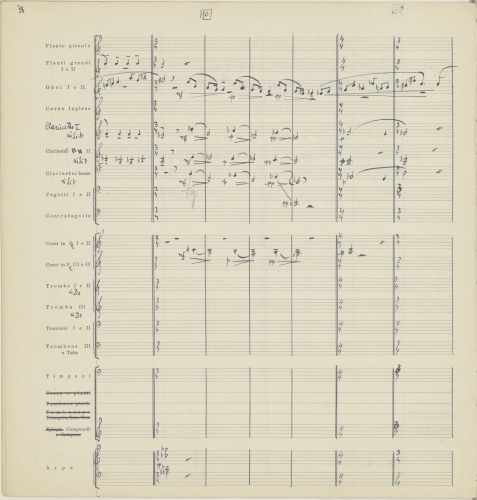
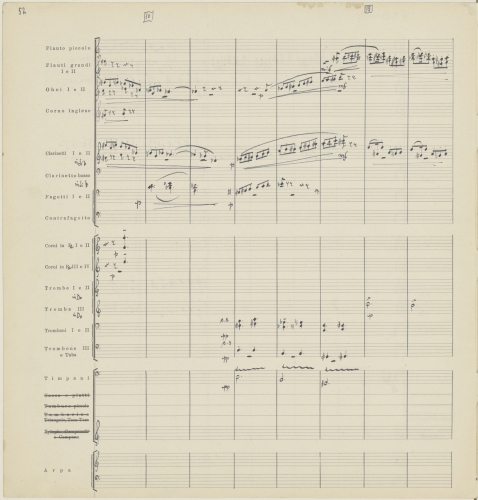
























The first movement (Adagio), functioning as an introduction, is an ABA arch form featuring very interesting types of sound that influence expression and mood, creating the effect of what Gołąb calls pulsating sonic ‘plasma’. Jerzy Freiheiter explains that ‘the prime row is, so to speak, “born” in front of the audience, like the theme of Beethoven’s Symphony No. 9 (‘Józef Koffler’, Muzyka 7–12 (1936), 86).
Movement two (Allegretto moderato, a sonata form) is the formal centre of gravity.
The third section (Andante, semplice e sostenuto) is a theme with two variations, theme recapitulation, and coda. It is characterised by frequent changes of tempo.
The last movement (Molto vivace) is an ABACABA sonata rondo whose central episode (C, structurally a fugue) has the qualities of a development segment.
Its inclusion (directly by ISCM jury member Alois Haba, outside the national competition) in the programme of ISCM’s London festival can be considered symbolic.
The note on this work in the festival programme (a text signed J. A. R.) indicates, however, that the version performed by Scherchen in London was slightly different from the one preserved in the only currently known autograph. What was then played as the fourth movement appears to be identical with the autograph’s second section, whereas the second movement (Scherzo Vivace) contains a fugato and may therefore be the same as the manuscript’s last section. According to Gołąb, however, the version presented in London may have been different altogether and related to the composition of the enigmatic, dedicated to Schönberg, ‘prelude and fugue for orchestra’, announced by Koffler (‘New Polish Music’ survey, Tęcza 4 (1935), 39).